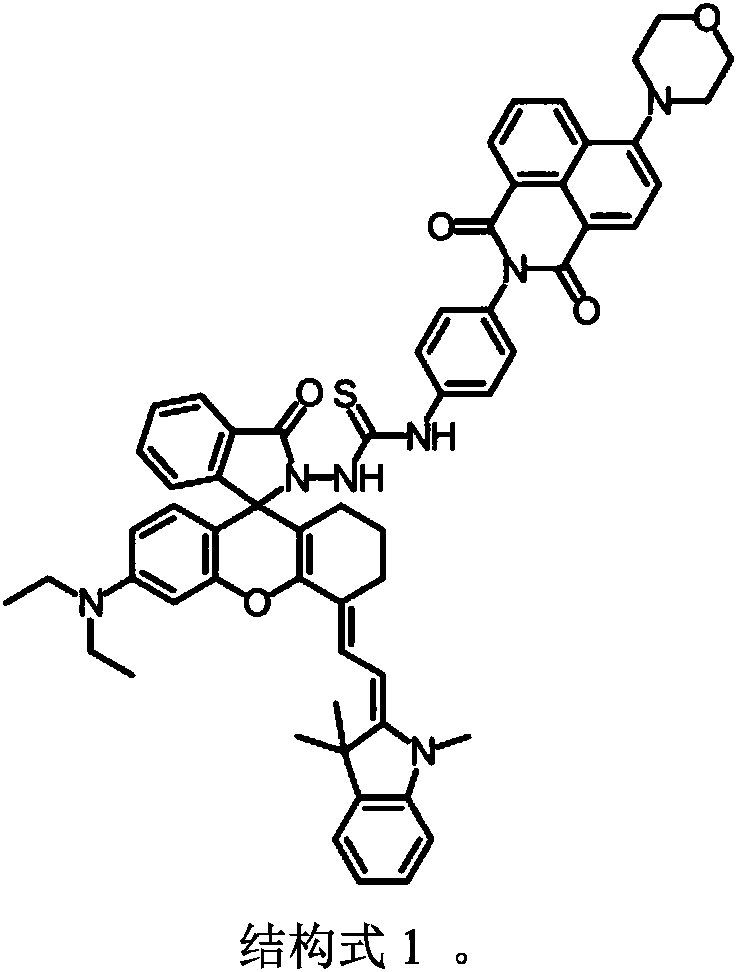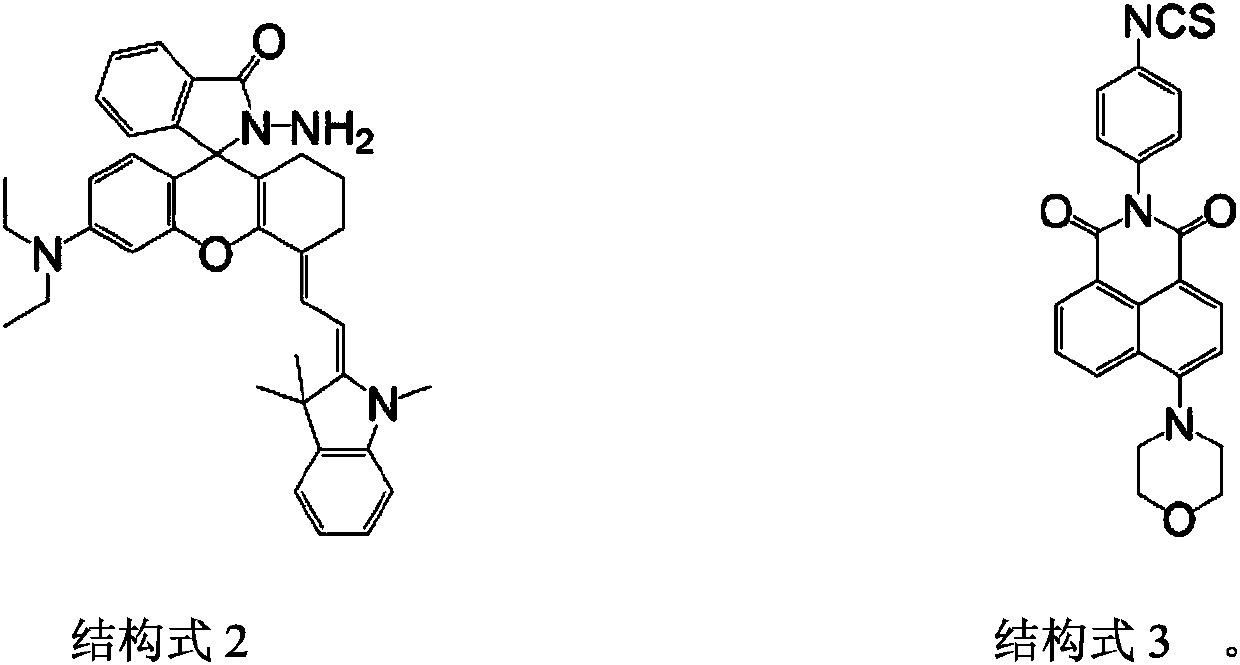Near-infrared reactive type two-photon fluorescence probe as well as preparation method and application of probe
A two-photon fluorescence, near-infrared technology, applied in the field of fluorescent probes, can solve problems such as limiting the scope of application, and achieve the effects of high sensitivity, good biocompatibility and excellent performance
- Summary
- Abstract
- Description
- Claims
- Application Information
AI Technical Summary
Problems solved by technology
Method used
Image
Examples
Embodiment 1
[0018] (1) The preparation method of fluorescent molecule CRPM is:
[0019] Under nitrogen protection, 1,3,3-trimethyl-2-methyleneindoline-rhodamine lactide (0.50g, 0.87mmol) was dissolved in 30mL of anhydrous acetonitrile, and 4-morpholinyl -1,8-Naphthimide-phenylisothiocyanate (0.36g, 0.87mmol), magnetically stirred, refluxed for 24h, and the temperature was controlled at 80°C. After the reaction was completed, CRPM was obtained by extraction, drying, and purification by column chromatography with a yield of 45%.
[0020] The synthetic route of compound CRPM is as follows:
[0021]
[0022] Wherein 1,3,3-trimethyl-2-methyleneindoline-rhodamine hydrazide was prepared according to literature method (JunyingXie, Chunyan Li, Yongfei Li, JunjieFei, Fen Xu, Juanou Yang, and Juan Liu.Near -Infrared Fluorescent Probe with High Quantum Yield and Its Application in the Selective Detection of Glutathione in Living Cells and Tissues. Analytical Chemistry, 2016, 88, 9746~9752). 4-M...
Embodiment 2
[0030] The preparation method of fluorescent molecule CRPM is:
[0031] Under nitrogen protection, 1,3,3-trimethyl-2-methyleneindoline-rhodamine lactide (0.20g, 0.35mmol) was dissolved in 20mL of anhydrous acetonitrile, and 4-morpholinyl -1,8-naphthalimide-phenylisothiocyanate (0.15g, 0.35mmol), reflux reaction for 12h under magnetic stirring, the temperature was controlled at 80°C. After the reaction was completed, CRPM was obtained by extraction, drying, and purification by column chromatography with a yield of 40%.
Embodiment 3
[0033] The preparation method of fluorescent molecule CRPM is:
[0034] Under nitrogen protection, 1,3,3-trimethyl-2-methyleneindoline-rhodamine lactide (0.20g, 0.35mmol) was dissolved in 20mL of anhydrous acetonitrile, and 4-morpholinyl -1,8-naphthalimide-phenylisothiocyanate (0.15g, 0.35mmol), reflux reaction for 24h under magnetic stirring, the temperature was controlled at 75°C. After the reaction was completed, CRPM was obtained by extraction, drying, and purification by column chromatography with a yield of 45%.
PUM
 Login to View More
Login to View More Abstract
Description
Claims
Application Information
 Login to View More
Login to View More - R&D Engineer
- R&D Manager
- IP Professional
- Industry Leading Data Capabilities
- Powerful AI technology
- Patent DNA Extraction
Browse by: Latest US Patents, China's latest patents, Technical Efficacy Thesaurus, Application Domain, Technology Topic, Popular Technical Reports.
© 2024 PatSnap. All rights reserved.Legal|Privacy policy|Modern Slavery Act Transparency Statement|Sitemap|About US| Contact US: help@patsnap.com










